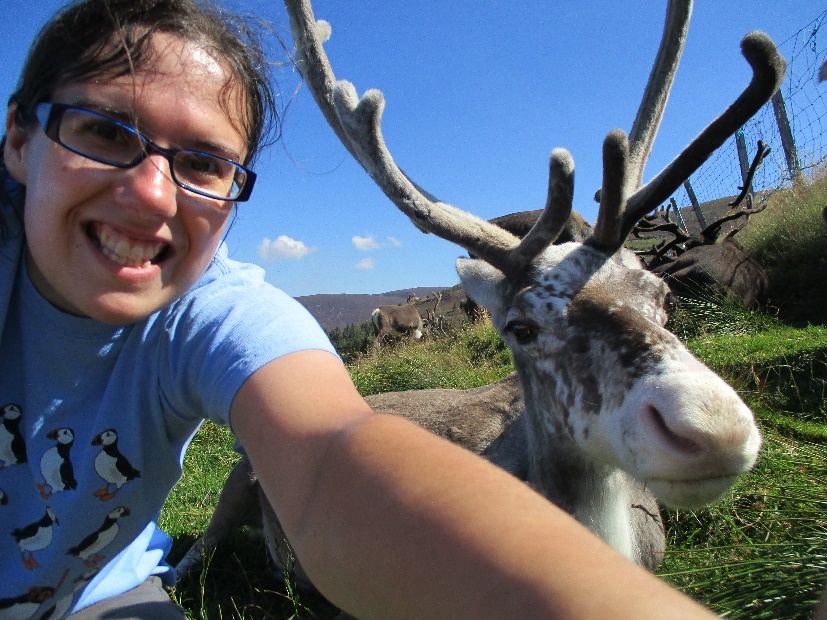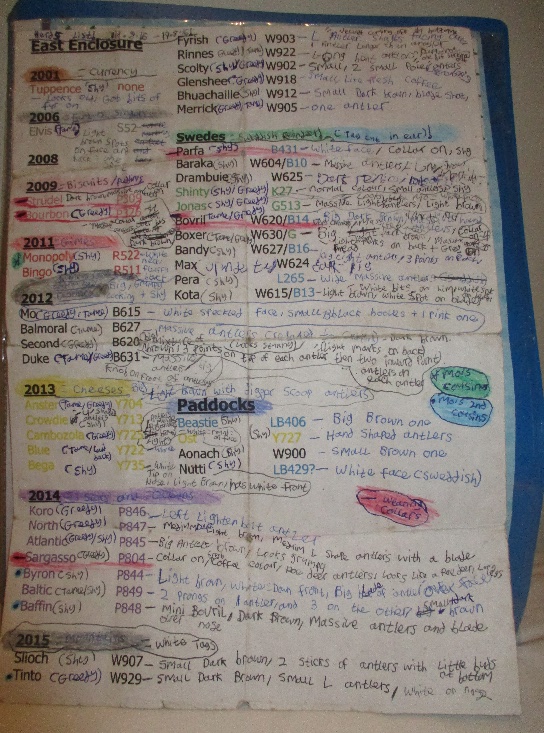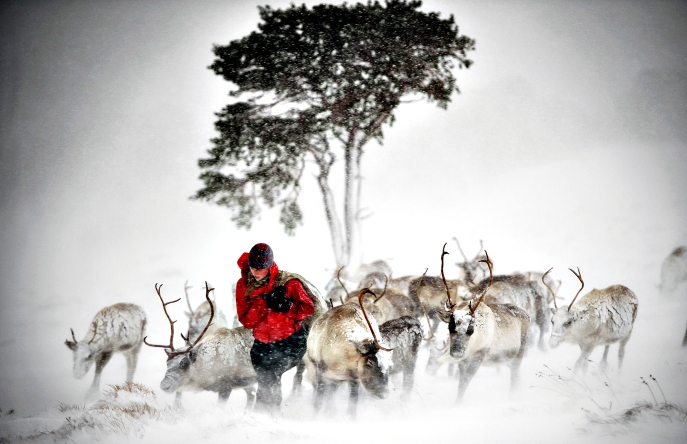Emm volunteers with us several times a year usually, and has been doing so for years now. Here’s her story of working in the summer and autumn seasons! Her recent blog about the winter and spring can be found here.
Summer
In summer I have been up in both July and August. The visitors are meeting the male reindeer in the hill enclosure. The female reindeer and the calves are free ranging on the Cairngorm Mountains.
The reindeer’s antlers have done the majority of their growth and the velvet is getting ready to strip away at the end of August. The reindeer are looking smart in their dark summer coats.
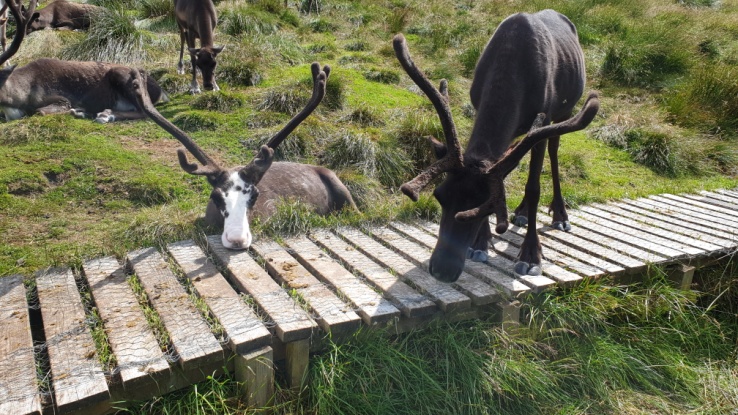
The weather can be hot in the summer. The flies bother the reindeer by flying noisily around them, sometimes the reindeer rush around to try to get away from the flies which tend to sit on their antlers as they can sense the blood supply in their growing antlers. We spray the reindeer’s antlers with citronella spray to protect them from the flies. Midges are also a problem in the summer for both reindeer and humans.
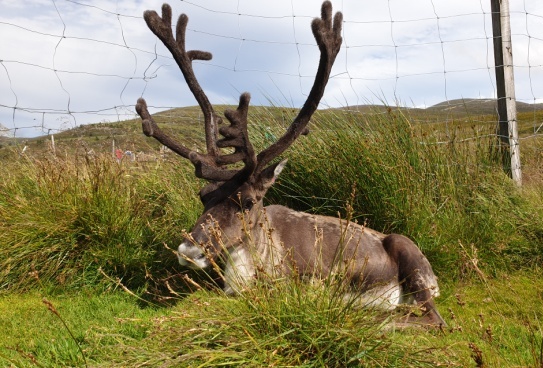
In one part of the enclosure, the reindeer have access to a shed for shade. One time when we got up there with the visitors, the reindeer were nowhere in sight. All 41 of them had gone into the small shed. The shed doesn’t look like it can fit 41 reindeer in but it is does, it is like a Doctor Who’s Tardis. One Hill Trip, I was herding them out of the shed, I realised that I hadn’t seen Blue – I found him in a small part of the shed asleep. Blue, who was deaf, didn’t hear his reindeer friends move on. The reason Blue was deaf is because he was leucistic (pure white with blue eyes). Leucism is a condition in which there is partial loss of pigmentation. Leucistic reindeer are camouflaged in the snow.
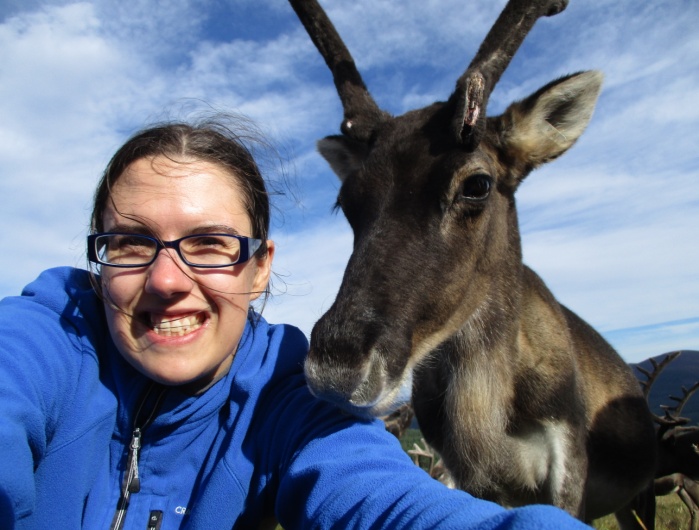
There are three Hill Trips a day (during the week) in the hill enclosure and last year we did ‘Summer Fun’ in the Paddocks which involved feeling the weight of antlers, feeling the weight of a feed sack, Paddock reindeer talks and much more fun (N.B. This will return in 2021!). Reindeer House is busier as the seasonal summer staff are working as there is a lot going on with three Hill Trips a day and Summer Fun in the Paddocks.
One of the jobs in the summer is to water the garden as it is hot.
Last July, Olympic would stand by the gate like he was guarding it and wouldn’t let visitors out of hill enclosure. I kept having to go over to him and move him on.
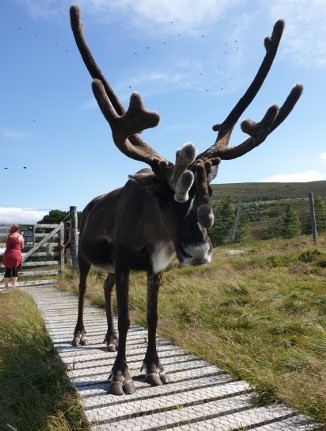
Autumn
In the Autumn, I normally come in October half term. The scenery is changing with leaves changing colour and leaves falling off the trees.
The reindeer’s winter coat is growing and most of the velvet has stripped off revealing the hard bone antler underneath.
It is the rutting and breeding season. Normally in different areas of the hill enclosure there is a bull with his girls. My two favourite breeding bulls are Houdini and Kota as they have massive magnificent antlers. When we feed the breeding bulls with their girls we have to be careful as they can be protective over their girls. We don’t take the visitors in with the bulls and their girls.
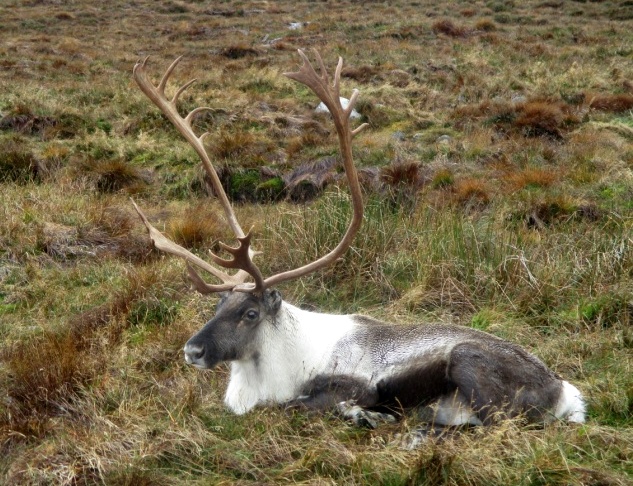
We do one Hill Trip a day in the hill enclosure. Normally in the afternoons we do sleigh training with the ‘Christmas reindeer’. We put the harnesses on them and harness them up to the sleigh. The reindeer pull the sleigh around Glenmore (where the Reindeer Centre is based). They even go on the road. It is so funny to see people’s faces when they drive past reindeer pulling a sleigh.
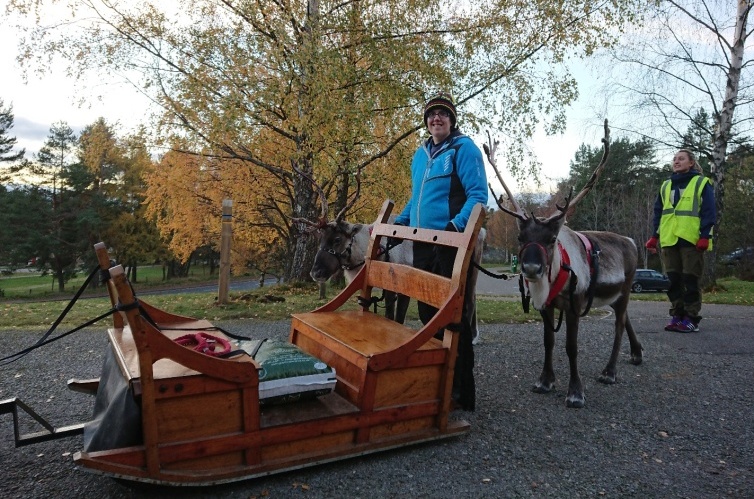
We also get to handle the calves to get them used to people. We sometimes take them on a walk around Glenmore in the morning.
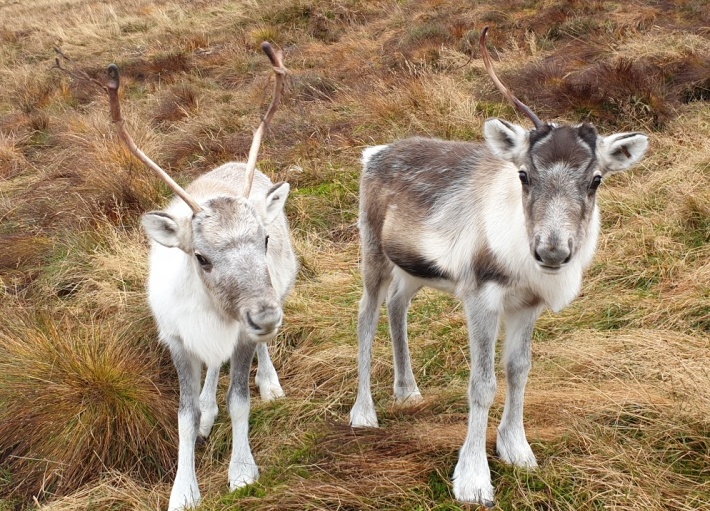
I am busy learning the calves names and if I hadn’t been up in May, I am learning which calf belongs to who and meeting all of them. The calves are also getting their new ear tags.
One year, I was lucky enough to help out at a early Christmas parade at the very start of November which was very special. It was at The Cairngorm Mountain. We wore red Christmas jumpers and woolly hats with reindeer on them. The reindeer team were Mo, Spike, Sooty, Aonach and calves Morse and Poirot. Mo and Spike pulled the sleigh with Santa in it. It was so wet and so windy. The wind was 60 miles per hour. Santa was holding his hat on in the sleigh. Not many people turned up. We had to tie things on to the pen railings otherwise they would have flown away.
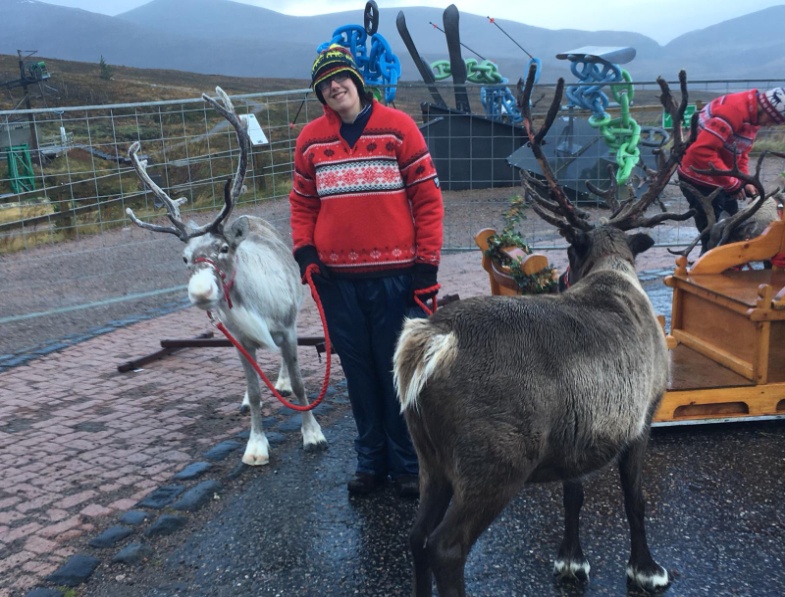
One of the other jobs in the autumn is to sweep up the leaves. At 4 o’clock it is starting to get dark. So we put the Paddock light on in the Paddocks so the visitors can still see the reindeer. When we put the reindeer to ‘bed’ in the woods and give them their tea, I normally put my head torch on.
My 2 Favourite Seasons
I have two favourite seasons which are autumn and spring.
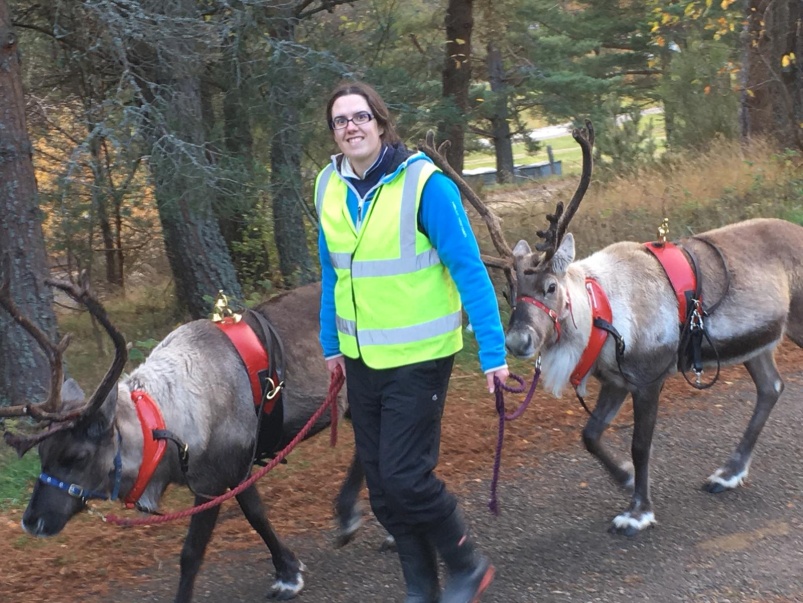
In the autumn, I love doing the Christmas sleigh training, helping the calves get used to being handled, learning the calves names and seeing the reindeer with their newly formed antlers.
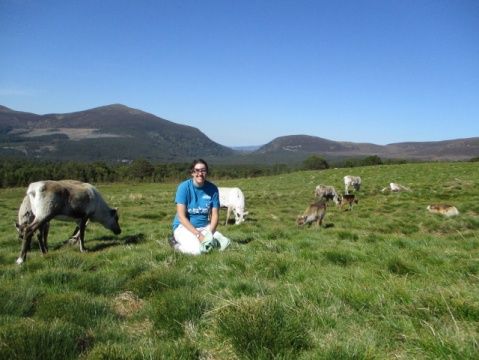
In the spring, I love seeing the newly born calves, seeing the reindeer being mums and hearing the grunts between mum and calf.
Emm


























